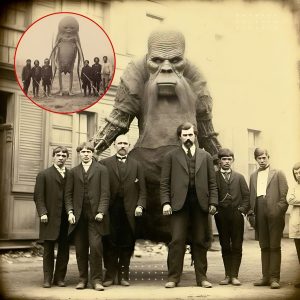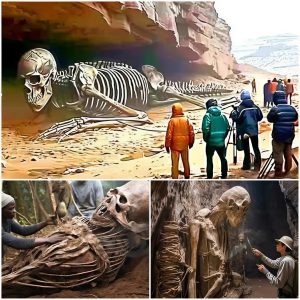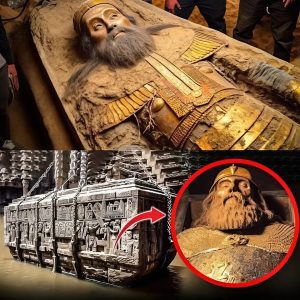A Shocking Discovery
The fossils were discovered by a team of archaeologists from the Bandung Institute of Archaeology (BIA) during an excavation at a previously unexplored site on the outskirts of the city. Initial analysis suggests that the remains date back to the late Pleistocene era, around 11,000 to 15,000 years ago. The most striking feature of the skeleton is a large, singular eye socket in the skull, eerily reminiscent of the mythical Cyclops creatures described in ancient tales.
“We were not prepared for such a find,” said Dr. Ratna Widjaja, lead archaeologist of the BIA team. “The structure of the skull is unlike anything we have encountered before. It aligns remarkably well with descriptions from local mythology, which is both fascinating and bewildering.”

Myth Meets Reality
The Cyclops Beast, known locally as “Si Mata Satu,” has been a part of Indonesian folklore for centuries. Stories describe the creature as a formidable guardian of the forests, possessing immense strength and a single, piercing eye that could see into a person’s soul. Traditionally, it was believed that encountering this beast would bring either great fortune or terrible misfortune, depending on the purity of one’s heart.
With the discovery of these fossils, many residents are now questioning the boundaries between myth and reality. Social media has exploded with a mix of awe and anxiety, as images of the excavation site circulate widely. Some locals have even reported experiencing vivid dreams and eerie sensations since the discovery, further fueling the panic.
Scientific and Cultural Impact
The scientific community is abuzz with the implications of this find. While some researchers caution against jumping to conclusions, others are intrigued by the potential for new insights into prehistoric life and the origins of mythological creatures. The BIA plans to conduct thorough examinations and DNA analysis to determine the true nature of the remains.
“This discovery could redefine our understanding of both natural history and cultural evolution,” said Dr. Widjaja. “It raises questions about how ancient humans perceived and interacted with their environment, and how these perceptions may have given rise to the myths that persist to this day.”

Public Reaction and Authorities’ Response
Local authorities have taken steps to manage the public reaction. A temporary cordon has been placed around the excavation site to prevent unauthorized access and to ensure the safety of both the archaeological team and curious onlookers. Information sessions and public talks are being organized to educate residents about the scientific process and to address their concerns.
“The discovery is undoubtedly remarkable, but we urge the public to remain calm and trust the scientific investigation,” said Mayor Didi Haryanto. “We are working closely with the BIA to ensure that this significant find is studied thoroughly and respectfully.”

A Community on Edge
Despite these efforts, the atmosphere in Bandung remains tense. For some, the discovery of the one-eyed monster fossils is a thrilling validation of their cultural heritage. For others, it is a source of deep unease, bringing ancient fears to the surface in a modern context.
As the scientific community continues its work, the people of Bandung find themselves caught between the allure of ancient legends and the reality of a groundbreaking archaeological find. Only time will tell what further secrets the Cyclops Beast’s remains may reveal, and how this discovery will shape the community’s future.

Conclusion
The unearthed fossils of the legendary one-eyed monster in Bandung represent a unique intersection of myth and science, captivating both locals and the global community. As researchers delve deeper into the mystery, the discovery stands as a testament to the enduring power of ancient stories and the endless quest for knowledge.





